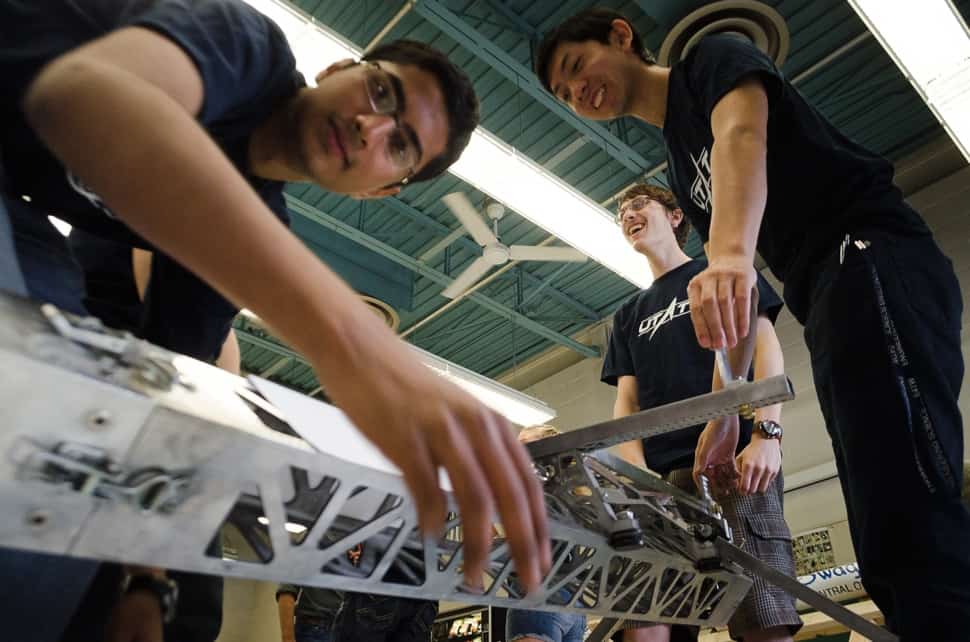On June 11, students, faculty members, and members of the public gathered at the University of Toronto Institute for Aerospace Studies (UTIAS) in North York for the Aero Demo, unveiling of the launch vehicle designed and constructed by students from the University of Toronto Aeronautics Team (UTAT) Rocketry Division.
The UTAT is multidisciplinary and includes over 100 undergraduate and graduate students across various faculties at U of T. In addition to building rockets and aircrafts, the UTAT hosts an annual aerospace conference in cooperation with other universities.
UTAT president Jeffrey Osborne said the UTAT is very broad in terms of its focus as aeronautics itself, involving several academic disciplines. “Aside from our Rocketry Division, we also have our Powered Flight Division, our Unmanned Aerial Vehicles Division, and our Outreach Division” says Osborne.
The Eos II launch vehicle has been in development for almost two years.
“Although it is a separate vehicle than the one we designed and built last year, fundamentally they are quite similar with a number of improvements made as compared to our first iteration,” Osborne explains.
“A big challenge is dealing with such a complex and large project. There are over 300 unique parts in our rocket this year, and everything down to the last nut and bolt needs to work in order for it to fly,” he adds, “This can be quite daunting for someone who is new to engineering, and oftentimes it can seem like completing it is impossible.”
The Eos II is an improvement upon its predecessor, Eos I. Both versions have airframes constructed entirely from carbon fibre for weight savings. In addition, to reduce assembly time, the Eos II rocket features a new means of connecting the bays of the rocket. The new design allows for a “quick-connect” bay connector, in that it does not require mechanical fasteners to link the bays of the rocket together. The new design requires pressure sealing of each bay.
Eos II additionally features a larger engine — the Bia II — which necessitates the use of a larger, thin-walled oxygen tank, which was constructed by the students themselve so that the weight of the overall system could be reduced.
The Eos II is a significant improvement over the previous model, as its avionics system includes added wired ground telemetry, launch control, payload deployment, and payload electronics, among other sensors and actuators.
“I don’t have to explain that test firing a rocket engine isn’t a simple process,” says Osborne. “But, after a few sleepless nights and perhaps a few less brain neurons, you get it working.”
The UTAT starts a new design cycle every year in July, using the summer as a planning period for the projects in upcoming academic year.
“This year we were exceptionally fortunate in that we more than doubled our team numbers, which has been a real benefit both to our project but also to the engagement that we have with students,” explains Osborne.
The UTAT is a tight-knit community where faculty members guide students in their undertakings. Professor Adam Steinberg at UTIAS is the faculty supervisor for the UTAT Rocketry Division. Osborne also acknowledged Keith Hockley, student workshop machinist at the student machine shop in the Mechanical Engineering Building, as a major source of support for the group.
“The only reason we can do all this work is because of the huge number of students that have a passion for aerospace, and because of the continued support of the U of T community,” says Osborne, after listing about 20 different programs affiliated with UTAT.
“It is a very exciting time to be a part of UTAT,” he adds, “We are a very driven team, we are exceptionally active, we will challenge you, but you will gain a lot from being a part of UTAT. This isn’t your ordinary after-school project.”


